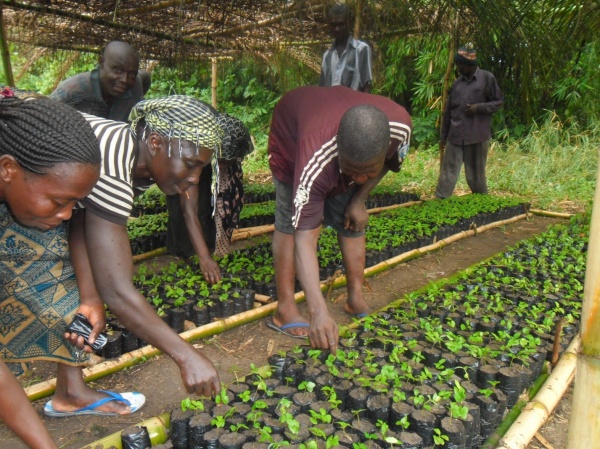Conserving Biodiversity and Livelihood Enhancement: the case of Saviefe Communities on the Weto Landscape in Ghana
06.07.2018
-
SUBMITTED ORGANISATION :
-
Greenglobe Ghana
-
DATE OF SUBMISSION :
-
06/07/2018
-
REGION :
-
Western Africa
-
COUNTRY :
-
Ghana (Volta Region)
-
SUMMARY :
-
The Weto Landscape, a world classified bio-diversity hotspot has been realized to be losing its natural resources as a result of unsustainable use, hence the need for activities towards resilience. Forests have disappeared. The mountain range contain several animal species which are becoming endangered and scarce, land has degraded and virtually little concerted resource management action through livelihood activities as well as feeble authoritative action concerning resource use prevails. In response to the Weto landscape resilience call by COMDEKS/GEF/SGP; Greenglobe Ghana (GG), an environmental organization proposed and implemented initiatives that demonstrated livelihood support with integrating biological, indigenous knowledge and cultural diversity in the landscape communities of Saviefe Gbogame, Agorkpo, and Deme under the working topic, “Livelihood Promotion and Institutional Building for Natural Resource Management.” Knowledge about the area indicated that, traditional knowledge and practices with adherence to customary norms, taboos and totems were integrated into landscape management plan to strengthen the management of local institutions. Introduction of activities of diversifying sources of incomes without compromising the resilience of the ecosystem as livestock rearing, beekeeping, mushroom production, rice and vegetable field’s development, cocoa and fruit trees cultivation was promoted. Capacity of traditional leadership, and revitalize fire volunteer squads, community forest management committees and landscape management volunteers to participate in the landscape resilience activities was also promoted. Forest restoration activities such as natural regeneration and a forestation were enhanced.
-
KEYWORD :
-
Livelihoods, Biodiversity, Ecosystems, Traditional knowledge
-
AUTHOR:
-
Samuel Deh, Frederick Gaitu (Greenglobe Ghana); Gershon Amaglo Tordey (Forestry Commission)
Summary Sheet
The summary sheet for this case study is available here.









